 W
WLady Harriet Acland was a British noblewoman and diarist. She accompanied her husband to British North America and became celebrated for her personal courage. She is commemorated on one of the bronze reliefs on second floor of the Saratoga Monument in the State of New York.
 W
WPrince Adolphus, Duke of Cambridge, was the tenth child and seventh son of the British king George III and Charlotte of Mecklenburg-Strelitz. He held the title of Duke of Cambridge from 1801 until his death. He also served as Viceroy of Hanover on behalf of his brothers George IV and William IV. His granddaughter Princess Victoria Mary of Teck, daughter of Princess Mary Adelaide, was the wife of King George V, and paternal grandmother of Queen Elizabeth II.
 W
WPrincess Amelia of Great Britain was the second daughter of King George II of Great Britain and Queen Caroline.
 W
WSir George Amyand, 1st Baronet was a British Whig politician, physician and merchant.
 W
WAnne was Queen of England, Scotland and Ireland between 8 March 1702 and 1 May 1707. On 1 May 1707, under the Acts of Union, the kingdoms of England and Scotland united as a single sovereign state known as Great Britain. She continued to reign as Queen of Great Britain and Ireland until her death in 1714.
 W
WPrincess Augusta Sophia of the United Kingdom was the sixth child and second daughter of King George III and Queen Charlotte.
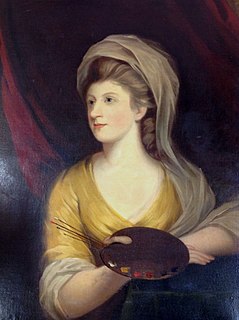 W
WDiana Noel, 2nd Baroness Barham was a peer, philanthropist and an abolitionist who established schools and churches on the Gower Peninsula.
 W
WDido Elizabeth Belle was a British heiress and a member of the Lindsay family of Evelix. She was born into slavery; her mother, Maria Belle, was an African slave in the British West Indies. Her father was Sir John Lindsay, a British career naval officer who was stationed there. Her father was knighted and promoted to admiral. Lindsay took Belle with him when he returned to England in 1765, entrusting her raising to his uncle William Murray, 1st Earl of Mansfield, and his wife Elizabeth Murray, Countess of Mansfield. The Murrays educated Belle, bringing her up as a free gentlewoman at their Kenwood House, together with another great-niece, Lady Elizabeth Murray, whose mother had died. Lady Elizabeth and Belle were second cousins. Belle lived there for 30 years. In his will of 1793, Lord Mansfield conferred her freedom and provided an outright sum and an annuity to her, making her an heiress.
 W
WLady Charles Cavendish-Bentinck, known between 1806 and 1816 as Lady Abdy, was a British aristocrat and a great-great-grandmother of Queen Elizabeth II.
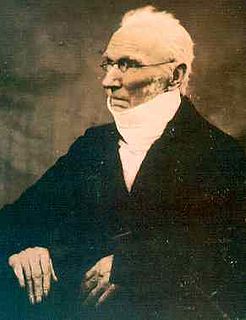 W
WPatrick Brontë was an Irish Anglican priest and author who spent most of his adult life in England. He was the father of the writers Charlotte, Emily, and Anne Brontë, and of Branwell Brontë, his only son. Patrick outlived his wife, the former Maria Branwell, by forty years, by which time all of their children had died as well.
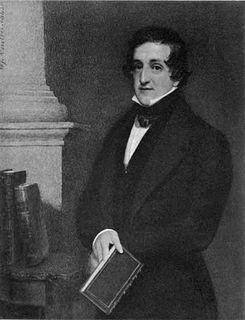 W
WJohn Cam Hobhouse, 1st Baron Broughton,, known as Sir John Hobhouse, Bt, from 1831 to 1851, was an English politician and diarist.
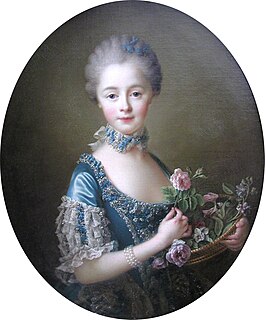 W
WAmelia Osborne, Marchioness of Carmarthen, 12th Baroness Darcy de Knayth, 9th Baroness Conyers, 5th Countess of Mértola, was a British peer and a Portuguese countess.
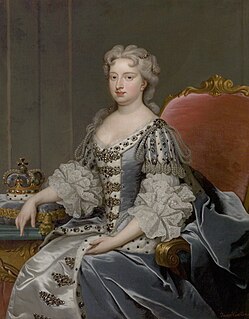 W
WCaroline of Brandenburg-Ansbach was Queen of Great Britain as the wife of King George II.
 W
WCaroline of Brunswick was Queen of the United Kingdom and Hanover as the wife of King George IV from 29 January 1820 until her death in 1821. She was the Princess of Wales from 1795 to 1820.
 W
WPrincess Caroline of Great Britain was the fourth child and third daughter of King George II of Great Britain and his wife Caroline of Ansbach.
 W
WCharlotte, Princess Royal, was Queen of Württemberg as the wife of King Frederick I. She was the first daughter and fourth child of King George III of the United Kingdom and his wife, Charlotte of Mecklenburg-Strelitz.
 W
WWilliam Cruickshank was a Scottish military surgeon and chemist, and professor of chemistry at the Royal Military Academy, Woolwich.
 W
WElizabeth Smith-Stanley, Countess of Derby was an English peeress. As the eligible eldest daughter of the 6th Duke of Hamilton, she married the 12th Earl of Derby in 1774, giving birth to three children. Lady Derby was popular among society and considered a leader of fashion alongside the Duchess of Devonshire.
 W
WPrincess Elizabeth of the United Kingdom was the seventh child and third daughter of King George III and Charlotte of Mecklenburg-Strelitz. After marrying the Landgrave of Hesse-Homburg, Frederick VI, she took permanent residence in Germany as landgravine.
 W
WThales Fielding (1793–1837) was an English watercolour painter.
 W
WLady Mary Fox was an illegitimate daughter of King William IV of the United Kingdom by his mistress Dorothea Jordan. In later life she became a writer.
 W
WFrederick, Prince of Wales, KG, was heir apparent to the British throne from 1727 until his death from a lung injury at the age of 44. He was the eldest but estranged son of King George II and Caroline of Ansbach, and the father of King George III.
 W
WWilliam Fytche was an administrator of the English East India Company. He served as President of Bengal in the mid-eighteenth century. He was one of the last administrators before the Battle of Plassey allowed the company to firmly establish its rule in India.
 W
WGeorge I was King of Great Britain and Ireland from 1 August 1714 and ruler of the Duchy and Electorate of Brunswick-Lüneburg (Hanover) in the Holy Roman Empire from 23 January 1698 until his death in 1727. He was the first British monarch of the House of Hanover.
 W
WGeorge II was King of Great Britain and Ireland, Duke of Brunswick-Lüneburg (Hanover) and a prince-elector of the Holy Roman Empire from 11 June 1727 (O.S.) until his death in 1760.
 W
WGeorge III was King of Great Britain and King of Ireland from 25 October 1760 until the union of the two countries on 1 January 1801, after which he was King of the United Kingdom of Great Britain and Ireland until his death in 1820. He was concurrently Duke and Prince-elector of Brunswick-Lüneburg ("Hanover") in the Holy Roman Empire before becoming King of Hanover on 12 October 1814. He was a monarch of the House of Hanover, but unlike his two predecessors, he was born in Great Britain, spoke English as his first language, and never visited Hanover.
 W
WGeorge IV was King of the United Kingdom of Great Britain and Ireland and King of Hanover from the death of his father, King George III, on 29 January 1820 until his own death ten years later. From 1811 until his accession, he served as regent during his father's final mental illness.
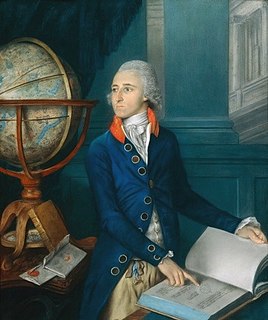 W
WJohn Goodricke FRS was an English amateur astronomer. He is best known for his observations of the variable star Algol in 1782.
 W
WJames Hamilton, 5th Duke of Hamilton and 2nd Duke of Brandon KT FRS was a Scottish peer, the son of the 4th Duke of Hamilton.
 W
WMary Hamilton was the subject of a notorious 18th-century case of fraud and female cross-dressing, in which Hamilton, under the name of Charles, duped a woman into a supposed marriage.
 W
WBenjamin Incledon (1730–1796) of Pilton House, Pilton, near Barnstaple in North Devon, was an English antiquarian and genealogist. He served as Recorder of Barnstaple (1758–1796).
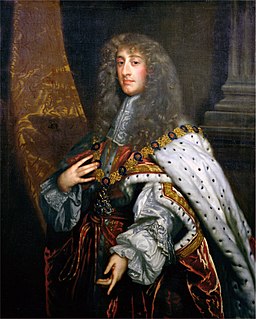 W
WJames II and VII was King of England and Ireland as James II, and King of Scotland as James VII, from 6 February 1685 until he was deposed in the Glorious Revolution of 1688. He was the last Catholic monarch of England, Scotland and Ireland; his reign is now remembered primarily for struggles over religious tolerance. However, it also involved the principles of absolutism and divine right of kings, and his deposition ended a century of political and civil strife by confirming the primacy of Parliament over the Crown.
 W
WLady Caroline Lamb was an Anglo-Irish aristocrat and novelist, best known for Glenarvon, a Gothic novel. She had an affair with Lord Byron in 1812, for whom she coined the phrase "mad, bad, and dangerous to know". Her husband was The Hon. William Lamb, who after her death became Prime Minister.
 W
WLouise of Great Britain was Queen of Denmark and Norway from 1746 until her death, as the first wife of King Frederick V. She was the youngest surviving daughter of King George II of Great Britain and Caroline of Ansbach.
 W
WPrincess Mary of Great Britain was the second-youngest daughter of King George II of Great Britain and his wife, Caroline of Ansbach, and Landgravine of Hesse-Kassel as the wife of Frederick II, Landgrave of Hesse-Kassel.
 W
WPrincess Mary, Duchess of Gloucester and Edinburgh was the eleventh child and fourth daughter of King George III of the United Kingdom and his consort Charlotte of Mecklenburg-Strelitz.
 W
WGeorge Mattocks (1735–1804) was a British stage actor and singer.
 W
WJohn Goodwin Gregory Peyton was an officer in the Royal Navy during the American and French revolutionary wars. As a lieutenant, he fought alongside his father Joseph Peyton, at the Moonlight Battle off Cape St Vincent, and later, in 1798, commanded HMS Defence at the Battle of the Nile. He retired a Rear admiral in 1800 and died in 1809 at the age of 56.
 W
WDorothy Bentinck, Duchess of Portland was Duchess of Portland as wife of William Cavendish-Bentinck, 3rd Duke of Portland, the Prime Minister of Great Britain. She is also a great-great-great-grandmother of Queen Elizabeth II through the queen's maternal grandmother.
 W
WMartha Ray was a British singer of the Georgian era. Her father was a corsetmaker and her mother was a servant in a noble household. Good-looking, intelligent, and a talented singer, she came to the attention of many of her father's patrons. She is best known for her affair with John Montagu, 4th Earl of Sandwich. She lived with him as his mistress from the age of seventeen, while his wife was suffering from mental illness. She gave birth to nine children, five of whom survived, including the lawyer and philanthropist Basil Montagu. During this time, she conducted a successful singing career, for which she became well known, as well as completing her education with Lord Sandwich's support.
 W
WSamuel Matthews better known as the Dulwich Hermit was an 18th-century London hermit, famous for his unresolved 1802 murder.
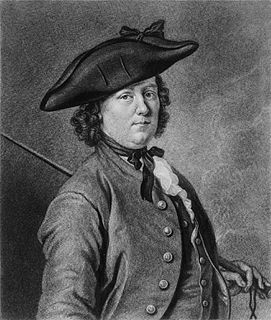 W
WHannah Snell was an 18th-century British woman who disguised herself as a man and became a soldier.
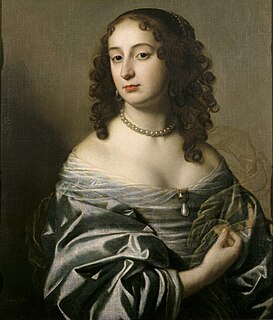 W
WSophia of Hanover was the Electress of Hanover by marriage to Elector Ernest Augustus, and later the heiress presumptive to the thrones of England and Ireland under the Act of Settlement 1701. She died less than two months before she would have become queen. Consequently, it was her son George I who succeeded her first cousin once removed, Anne.
 W
WPrincess Sophia of the United Kingdom was the twelfth child and fifth daughter of King George III and Charlotte of Mecklenburg-Strelitz. Sophia is perhaps best known for the rumours surrounding a supposed illegitimate child to whom she gave birth as a young woman.
 W
WJames Stratford was a British printer, bookseller, and publisher in the late eighteenth and early nineteenth centuries who specialised in producing part-works which were sold in instalments for later binding. He originally worked with William Stratford but later traded on his own. He was made bankrupt in 1813 and kept in Fleet Prison.
 W
WCharles Edward Louis John Casimir Sylvester Severino Maria Stuart was the elder son of James Francis Edward Stuart, grandson of James II and VII, and the Stuart claimant to the throne of Great Britain after 1766 as "Charles III". During his lifetime, he was also known as "the Young Pretender" and "the Young Chevalier"; in popular memory, he is "Bonnie Prince Charlie". He is best remembered for his role in the 1745 rising; his defeat at Culloden in April 1746 effectively ended the Stuart cause, and subsequent attempts failed to materialise, such as a planned French invasion in 1759. His escape from Scotland after the uprising led to his portrayal as a romantic figure of heroic failure.
 W
WHenry Benedict Thomas Edward Maria Clement Francis Xavier Stuart, Cardinal Duke of York was a Roman Catholic cardinal, as well as the fourth and final Jacobite heir to claim the thrones of England, Scotland, France, and Ireland publicly. Unlike his father, James Francis Edward Stuart, and brother, Charles Edward Stuart, Henry made no effort to seize the throne. After Charles's death in January 1788 the Papacy did not recognise Henry as the lawful ruler of England, Scotland, and Ireland, but referred to him as the Cardinal Duke of York.
 W
WJames Francis Edward Stuart, nicknamed The Old Pretender by Whigs, was the son of King James II and VII of England, Scotland and Ireland, and his second wife, Mary of Modena. He was Prince of Wales from July 1688 until, just months after his birth, his Catholic father was deposed and exiled in the Glorious Revolution of 1688. James II's Protestant elder daughter, Mary II, and her husband, William III, became co-monarchs and the Bill of Rights 1689 and Act of Settlement 1701 excluded Catholics from the English throne, subsequently, the British throne.
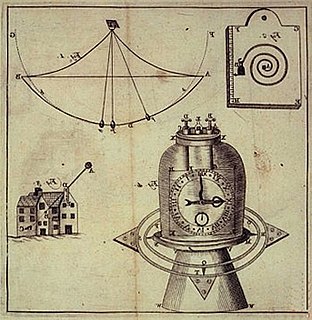 W
WJeremy Thacker was an 18th-century writer and watchmaker, who for a long time was believed to be the first to have coined the word "chronometer" for precise clocks designed to find longitude at sea, though an earlier reference by William Derham has now been found. Thacker is credited with writing The Longitudes Examin'd, published in London in 1714, in which the term 'chronometer' appears. In the work, the claim is made that Thacker created and extensively tested a marine chronometer positioned on gimbals and within a vacuum, and that sea trials would take place. It has been concluded by others that such tests must have resulted in failure. The idea of a vacuum for a marine clock had already been proposed by the Italian clockmaker Antimo Tempera in 1668. Slightly later, John Harrison would successfully build marine timekeepers from 1730.
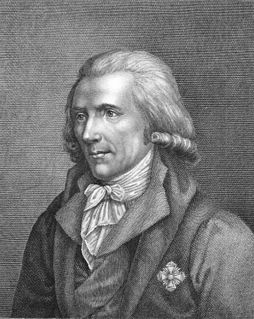 W
WSir Benjamin Thompson, Count Rumford, FRS was an American-born British physicist and inventor whose challenges to established physical theory were part of the 19th-century revolution in thermodynamics. He served as lieutenant-colonel of the King's American Dragoons, part of the British Loyalist forces, during the American Revolutionary War. After the end of the war he moved to London, where his administrative talents were recognized when he was appointed a full colonel, and in 1784 he received a knighthood from King George III. A prolific designer, Thompson also drew designs for warships. He later moved to Bavaria and entered government service there, being appointed Bavarian Army Minister and re-organizing the army, and, in 1791, was made a Count of the Holy Roman Empire.
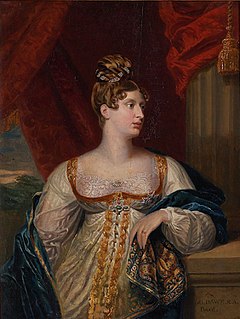 W
WPrincess Charlotte Augusta of Wales was the only child of George, Prince of Wales, and his wife, Caroline of Brunswick. If she had outlived both her grandfather King George III and her father, she would have become Queen of the United Kingdom; but she died at the age of 21, predeceasing them both.
 W
WMary Wells, afterwards Mrs. Sumbel, was a British actress and memoirist.
 W
WPriscilla Anne Fane, Countess of Westmorland, styled Lady Burghersh between 1811 and 1841, was a British linguist and artist.
 W
WWilliam IV was King of the United Kingdom of Great Britain and Ireland and King of Hanover from 26 June 1830 until his death in 1837. The third son of George III, William succeeded his elder brother George IV, becoming the last king and penultimate monarch of Britain's House of Hanover.
 W
WCarl Gottfried Woide, also known in England as Charles Godfrey Woide, was an Orientalist, a biblical scholar and a pastor.